Wen-Ming Chen
MBPU: A Plug-and-Play State Space Model for Point Cloud Upsamping with Fast Point Rendering
Oct 21, 2024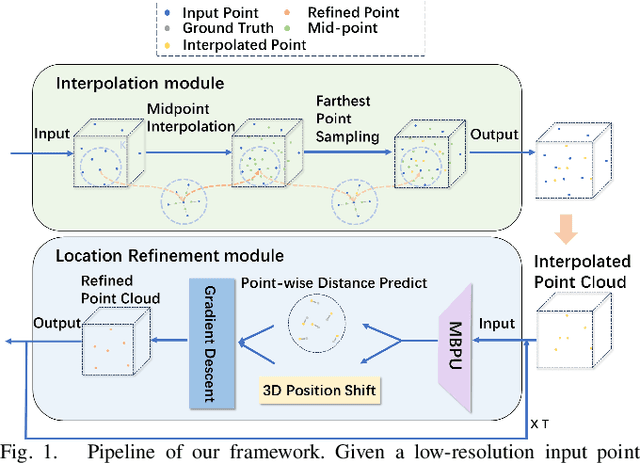
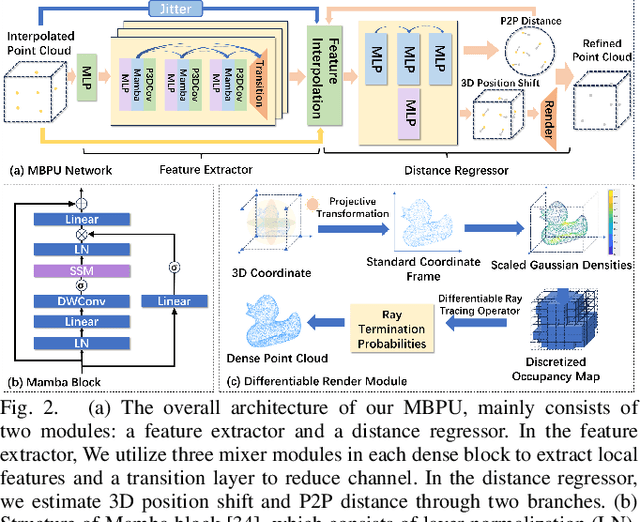
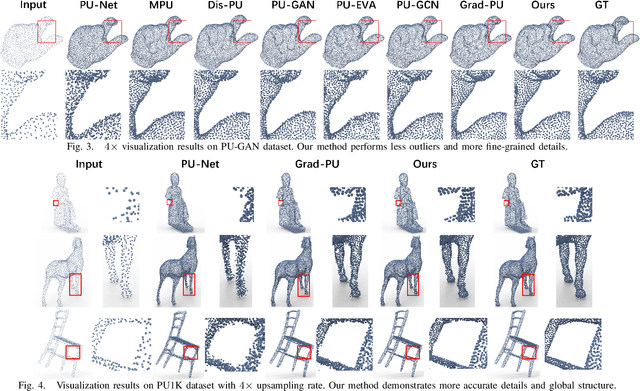
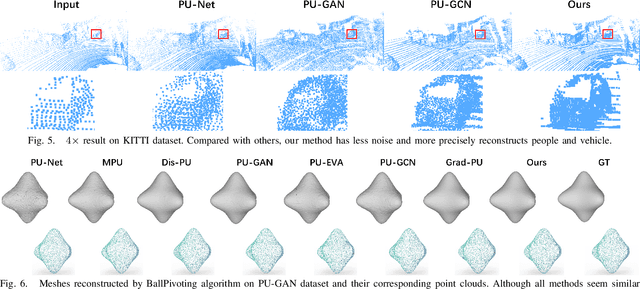
Abstract:The task of point cloud upsampling (PCU) is to generate dense and uniform point clouds from sparse input captured by 3D sensors like LiDAR, holding potential applications in real yet is still a challenging task. Existing deep learning-based methods have shown significant achievements in this field. However, they still face limitations in effectively handling long sequences and addressing the issue of shrinkage artifacts around the surface of the point cloud. Inspired by the newly proposed Mamba, in this paper, we introduce a network named MBPU built on top of the Mamba architecture, which performs well in long sequence modeling, especially for large-scale point cloud upsampling, and achieves fast convergence speed. Moreover, MBPU is an arbitrary-scale upsampling framework as the predictor of point distance in the point refinement phase. At the same time, we simultaneously predict the 3D position shift and 1D point-to-point distance as regression quantities to constrain the global features while ensuring the accuracy of local details. We also introduce a fast differentiable renderer to further enhance the fidelity of the upsampled point cloud and reduce artifacts. It is noted that, by the merits of our fast point rendering, MBPU yields high-quality upsampled point clouds by effectively eliminating surface noise. Extensive experiments have demonstrated that our MBPU outperforms other off-the-shelf methods in terms of point cloud upsampling, especially for large-scale point clouds.
GS-PT: Exploiting 3D Gaussian Splatting for Comprehensive Point Cloud Understanding via Self-supervised Learning
Sep 08, 2024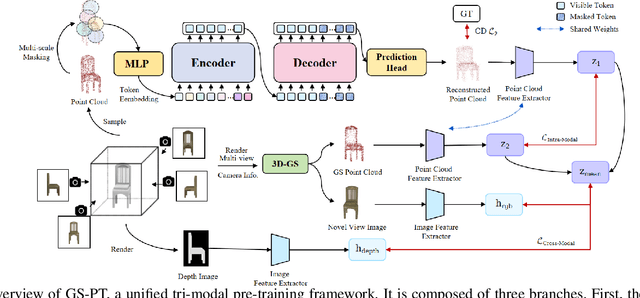
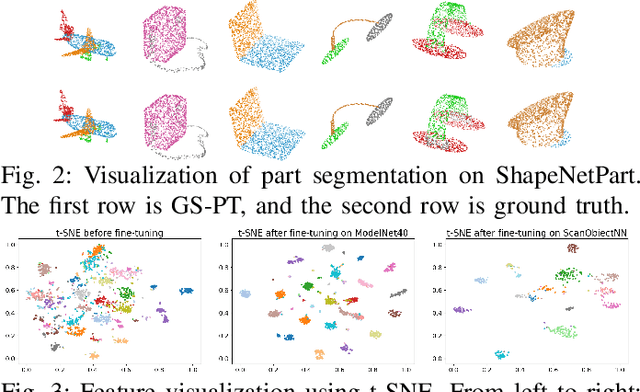
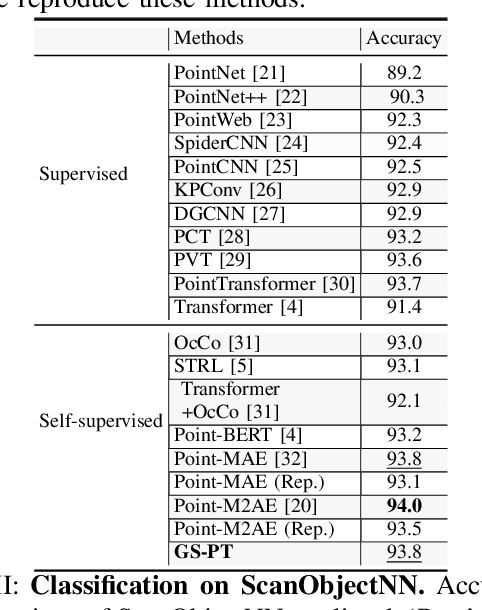
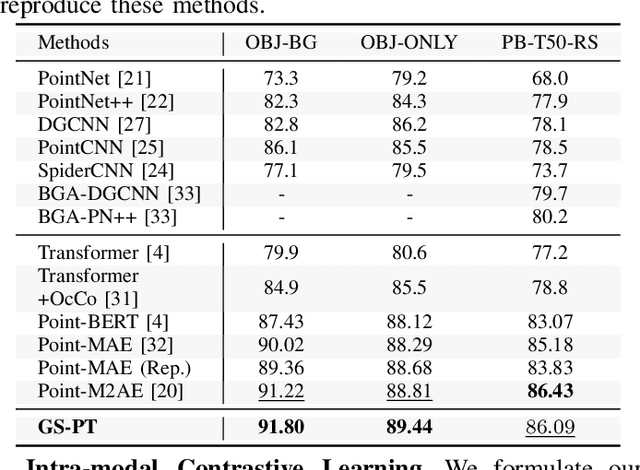
Abstract:Self-supervised learning of point cloud aims to leverage unlabeled 3D data to learn meaningful representations without reliance on manual annotations. However, current approaches face challenges such as limited data diversity and inadequate augmentation for effective feature learning. To address these challenges, we propose GS-PT, which integrates 3D Gaussian Splatting (3DGS) into point cloud self-supervised learning for the first time. Our pipeline utilizes transformers as the backbone for self-supervised pre-training and introduces novel contrastive learning tasks through 3DGS. Specifically, the transformers aim to reconstruct the masked point cloud. 3DGS utilizes multi-view rendered images as input to generate enhanced point cloud distributions and novel view images, facilitating data augmentation and cross-modal contrastive learning. Additionally, we incorporate features from depth maps. By optimizing these tasks collectively, our method enriches the tri-modal self-supervised learning process, enabling the model to leverage the correlation across 3D point clouds and 2D images from various modalities. We freeze the encoder after pre-training and test the model's performance on multiple downstream tasks. Experimental results indicate that GS-PT outperforms the off-the-shelf self-supervised learning methods on various downstream tasks including 3D object classification, real-world classifications, and few-shot learning and segmentation.
 Add to Chrome
Add to Chrome Add to Firefox
Add to Firefox Add to Edge
Add to Edge